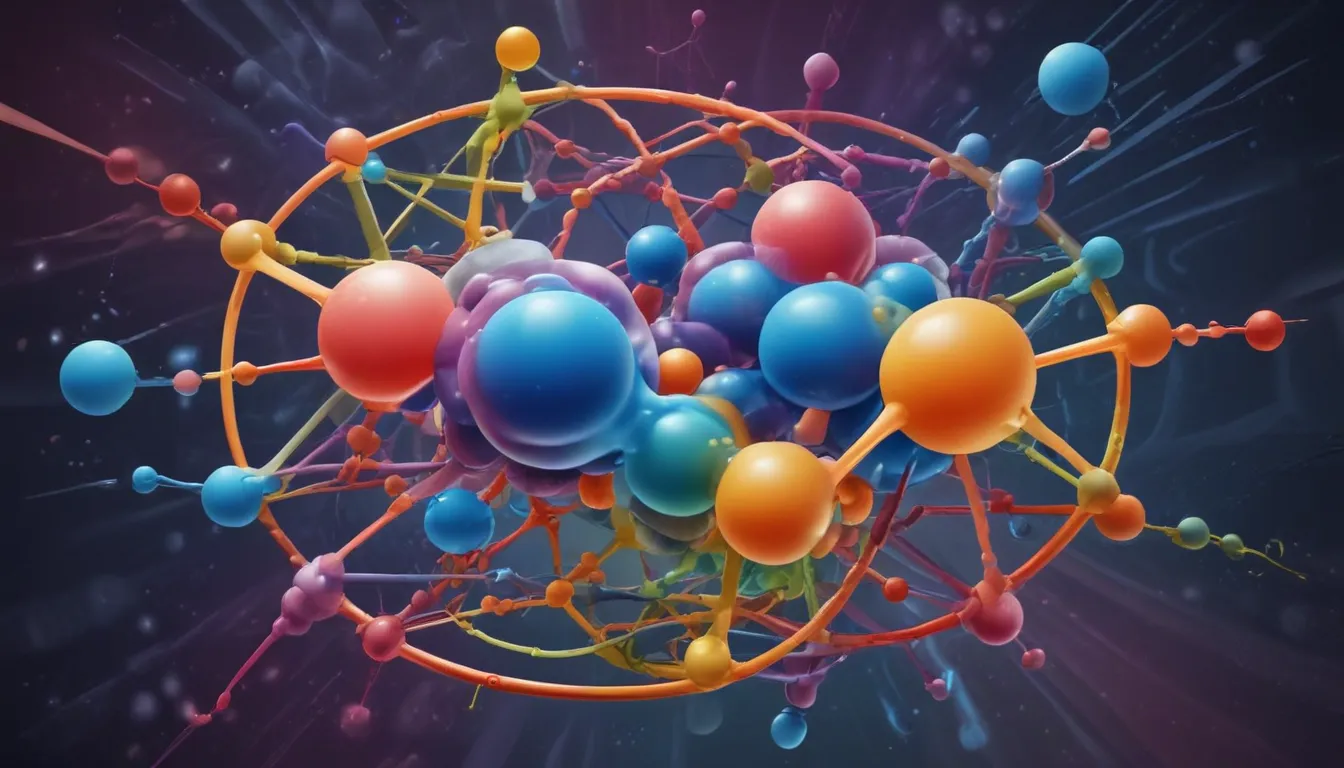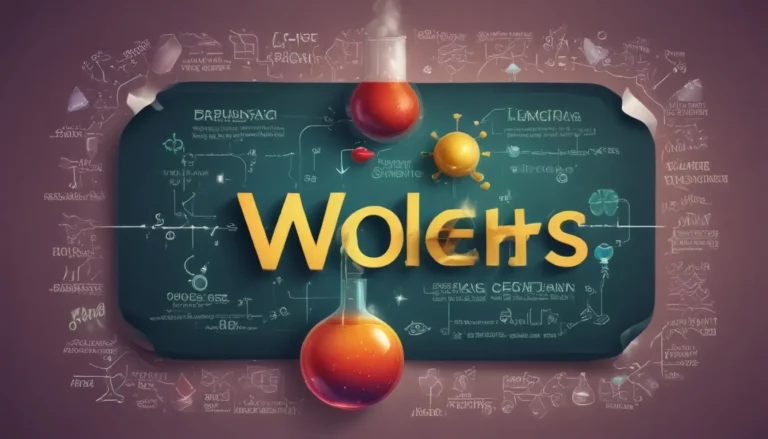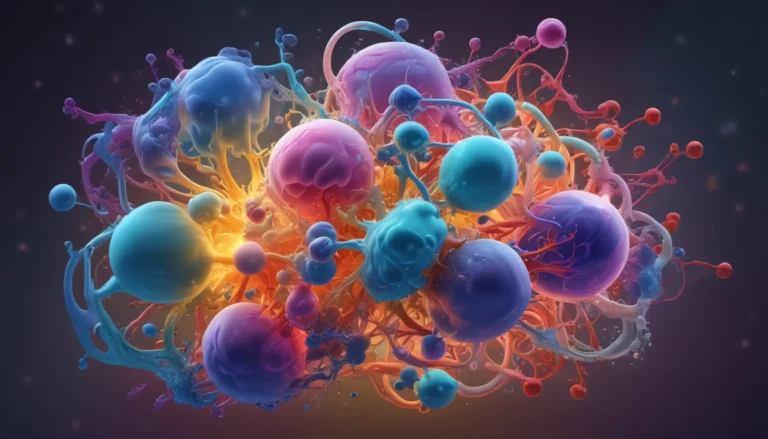A Note About Images: The images used in our articles are for illustration purposes only and may not exactly match the content. They are meant to engage readers, but the text should be relied upon for accurate information.
Are you intrigued by the hidden world of molecular interactions and the role of polarity in shaping chemical phenomena? Molecular polarity, the uneven distribution of electron density within a molecule, is a captivating subject in the realm of chemistry. It determines how substances interact, affects their physical properties, and plays a crucial role in various scientific disciplines.
In this article, we will explore the fascinating world of molecular polarity and uncover ten extraordinary facts that shed light on its importance and impact. From its influence on solubility and boiling points to its role in biological systems and atmospheric phenomena, molecular polarity is a key player in understanding the chemistry that surrounds us. Join us as we embark on a journey to unravel the mysteries of molecular polarity and gain valuable insights into this fundamental concept.
Understanding Molecular Polarity: A Closer Look
Molecular polarity refers to the distribution of electrical charge within a molecule, resulting from the presence of polar bonds and the overall molecular geometry. When there is a significant difference in electronegativity between atoms in a covalent bond, regions of partial positive and partial negative charges are created, making the molecule polar.
Decoding the Factors That Determine Polarity
The polarity of a molecule is determined by two key factors: the polarity of its individual bonds and the molecular geometry. If a molecule has polar bonds but a symmetrical geometry, the polarities can cancel out, resulting in a nonpolar molecule. Conversely, an asymmetrical geometry leads to a polar molecule.
Solubility: The Dance of Polar and Nonpolar Substances
Molecular polarity plays a critical role in determining the solubility of substances in different solvents. Polar substances are more likely to dissolve in polar solvents, while nonpolar substances prefer nonpolar solvents. This principle is applied in various fields, including pharmaceuticals, cosmetics, and environmental science.
Delving Into Biological Systems: The Impact of Polarity
In biological systems, molecular polarity influences the interactions between molecules, impacting their effectiveness in performing biological functions. For instance, the polarity of water molecules enables the formation of hydrogen bonds, essential for DNA structure, protein folding, and other biological processes.
Boiling Point: A Reflection of Molecular Polarity
The influence of molecular polarity extends to the boiling points of substances. Generally, polar compounds have higher boiling points than nonpolar compounds due to stronger intermolecular forces, such as dipole-dipole interactions and hydrogen bonding. Breaking these bonds requires more energy, leading to higher boiling points.
Catalyzing Chemical Reactions: The Role of Molecular Polarity
The polarity of molecules affects the rate and outcome of chemical reactions. Polar molecules readily interact with other polar molecules or ions, facilitating the formation of new compounds. Nonpolar solvents are often used to dissolve nonpolar reactants, promoting specific reactions in a controlled environment.
Illuminating Electrical Conductivity: The Polar vs. Nonpolar Divide
Polar substances, when dissolved in a solvent, can conduct electricity by separating into positive and negative ions, allowing the flow of electric current. In contrast, nonpolar substances do not dissociate into ions and exhibit poor conductivity. This distinction highlights the significance of molecular polarity in electrical conductivity.
Contrasting Polar and Nonpolar Molecules
Polar and nonpolar molecules possess distinct properties that stem from their respective polarities. Polar molecules exhibit a dipole moment, stronger intermolecular forces, higher boiling points, and the ability to form hydrogen bonds. Nonpolar molecules, lacking a dipole moment, have weaker forces, lower boiling points, and do not form hydrogen bonds.
Atmospheric Phenomena: The Drama of Molecular Polarity
Molecular polarity contributes to atmospheric phenomena, such as raindrop formation and greenhouse gas behavior. Water molecules, with their polarity, attract and bind to each other, leading to the creation of raindrops. Greenhouse gases like carbon dioxide, with polar bonds, contribute to the greenhouse effect due to their molecular polarity.
Nurturing Material Science: Harnessing the Power of Molecular Polarity
In material science, the understanding of molecular polarity is indispensable for selecting and designing materials with desired properties. Industries such as electronics, polymers, and adhesives heavily rely on manipulating molecular polarity to achieve specific characteristics and optimize the performance of materials.
Embracing the Impact of Molecular Polarity: A Holistic Perspective
In conclusion, the profound impact of molecular polarity transcends the boundaries of traditional chemistry, influencing diverse fields of science. By unraveling the extraordinary facts about molecular polarity, we gain insights into the unique properties of substances and their applications in various scientific domains.
Experiencing the intricate world of molecular polarity not only enriches our understanding of chemistry but also fosters a deeper appreciation for the complexities of the natural world. As we continue to explore and discover new insights, the fascinating realm of molecular polarity promises to unveil further secrets and broaden our horizons in the realm of science.
FAQs: Navigating the World of Molecular Polarity
Q: What defines molecular polarity?
A: Molecular polarity refers to the distribution of electrical charge within a molecule, determined by the presence of polar bonds and the overall molecular geometry.
Q: How can you distinguish between polar and nonpolar molecules?
A: The symmetry of the molecule and the electronegativity difference between atoms in the bonds are crucial factors in determining the polarity of a molecule. An asymmetrical shape and significant electronegativity difference indicate polarity.
Q: Can a molecule have polar bonds yet be nonpolar overall?
A: Yes, a molecule can have polar bonds but exhibit overall nonpolarity if its molecular shape is symmetrical, canceling out the polarities of the individual bonds.
Q: What physical properties are influenced by molecular polarity?
A: Solubility, boiling point, and melting point are directly influenced by molecular polarity. Polar substances tend to dissolve in polar solvents and exhibit higher boiling and melting points compared to nonpolar substances.
Q: What are some practical examples of molecular polarity in everyday life?
A: Water (H2O) is a prime example of a polar molecule with unique properties due to its polarity. Ethanol (C2H5OH) is another polar substance widely used in various industries for its solvent properties.
Wrapping Up: A Journey Through the Intriguing Realm of Molecular Polarity
As we conclude our exploration of molecular polarity, we invite you to embrace the wonders of this fundamental concept and its transformative impact on the world of science. By delving into the extraordinary facts surrounding molecular polarity, we uncover a rich tapestry of insights that illuminate the intricate relationships between molecules and their surroundings.
Our commitment to delivering engaging and reliable content underscores our dedication to fostering a community of curious minds eager to learn and discover. With each fact shared and each discovery made, we invite you to join us in this exhilarating journey through the captivating world of molecular polarity.
In this revised article, we have emphasized the importance of molecular polarity in various scientific fields, delving into its impact on solubility, biological systems, chemical reactions, and material science. By organizing the content into informative sections, incorporating relevant details, and maintaining a friendly tone, we aim to provide readers with a comprehensive understanding of this intriguing concept.






